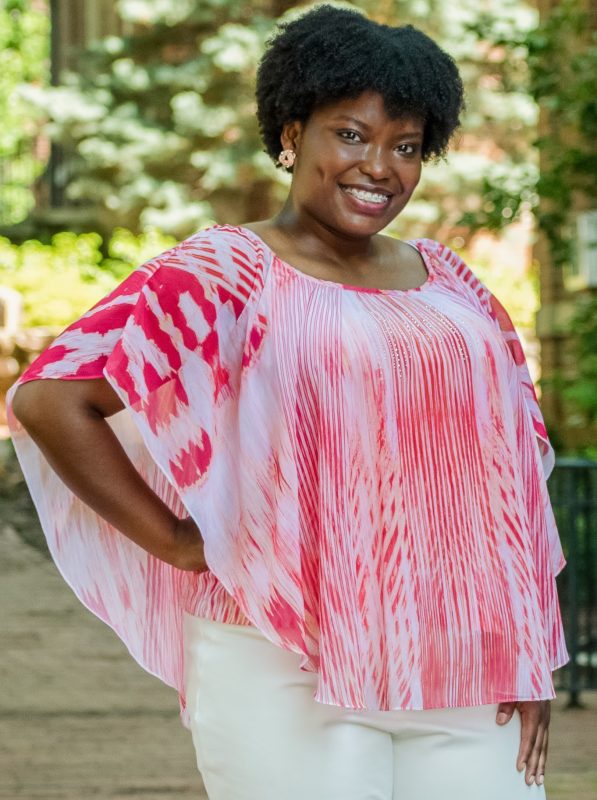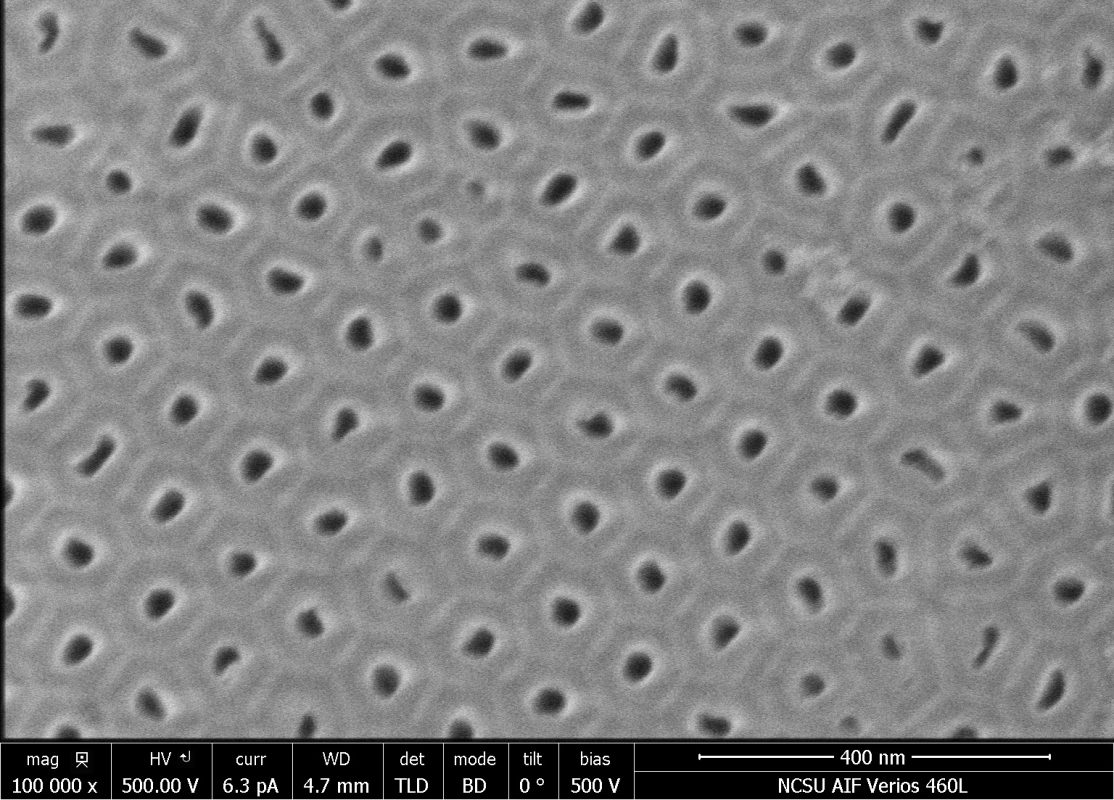
I am a senior (5+ years) chemistry Ph.D. candidate in Dr. Alex Smirnov’s group. My research centers around biophysical and analytical chemistry. I am currently working on the fabrication and development of advanced nanoporous materials for the analysis of biological species using magnetic resonance techniques, such as electron paramagnetic resonance (EPR) spectroscopy. After I graduate, I hope to participate in the BASF PhD Leadership Development Program to learn about positions within the company, cultivate my passion for chemistry, and have the ability to become a mentor for younger STEM scholars. Outside my research and studies, I enjoy dancing with Sube Ritmo (the only Latin dance team at NCSU) and playing sports. Also, I love watching Korean shows and am in the process of trying to learn hangeul.
What instruments are you using for your research and why do you like them?
For my research, I use the FEI Verios 460L Scanning Electron Microscope. Because my advanced materials generate pores at the nanoscale level, SEM is necessary for me to see the uniformity and overall structure of the surface of my materials. With the naked eye, my nanoporous materials can appear to be unflawed and ideal. But once I zoom in with SEM to see the nanopores, I can then observe all the contours and imperfections produced and fully grasp how my research takes shape. As a result, this allows me to better understand and appreciate the SEM instrument and, ultimately, the AIF staff.
What have you been researching and how is it impacting the community?
Lipid bilayer membranes play a pivotal role in energy transduction events for biological function. Some of these roles are related to the structure, dynamics, and electrostatic properties of lipid bilayers. Magnetic resonance methods such as NMR and EPR are known to offer a wealth of data on these lipid systems and are particularly informative when the lipid bilayers are macroscopically aligned. However, the previously developed substrate-supported macroscopically aligned lipid bilayers employed to investigate lipid membranes by magnetic resonance have limitations with the types of lipids and other restrictions such as temperature, pH, ionic strength, etc. More recently, anodic aluminum oxide (AAO) membranes with ordered, homogeneous nanopores with tunable diameter were utilized to promote the self-assembly of lipid nanotubular bilayers inside the pores and assist in characterizing the biophysical properties of nanopore-confined molecules by magnetic resonance methods. Accordingly, I focus on fabricating advanced AAO to help assess the surface electrostatics of lipid bilayers through substrate-supported self-assembly within the pores by detecting changes in pH with pH-sensitive stable nitroxide radicals and spin-labeling EPR. Furthermore, by utilizing different electrolytes and anodizing at a range of voltages, I can alter the interpore distance, pore diameter, and the overall thickness of the AAO membrane, which can significantly impact the lipid deposition and confinement within the pores and affect the pH and EPR analysis. With this approach, I hope more insight can be gained into the macromolecular dynamics of membrane lipids/proteins and, therefore, elucidate the potential for biotechnological applications, such as biosensors and biochips built with membrane proteins and receptor complexes.

What have you learned from your experience at AIF?
I have learned how to use the Verios SEM for my insulating samples properly and how the SEM image translates to reality. Additionally, AIF has made me more aware of the various methods of characterizing a sample. Although I do not use any of these other methods, I can still acknowledge their importance to research in general.
Best thing about AIF in 5 words or less?
Always supportive and promotes learning
Is there a staff member at AIF that has helped you?
Thank you to Phillip, Anna, and everyone at AIF for their help and support. But a special thank you to Chuck for being such a tremendous help each and every time I have had to use the SEM, from training to obtaining the images. He is truly the king of SEM!